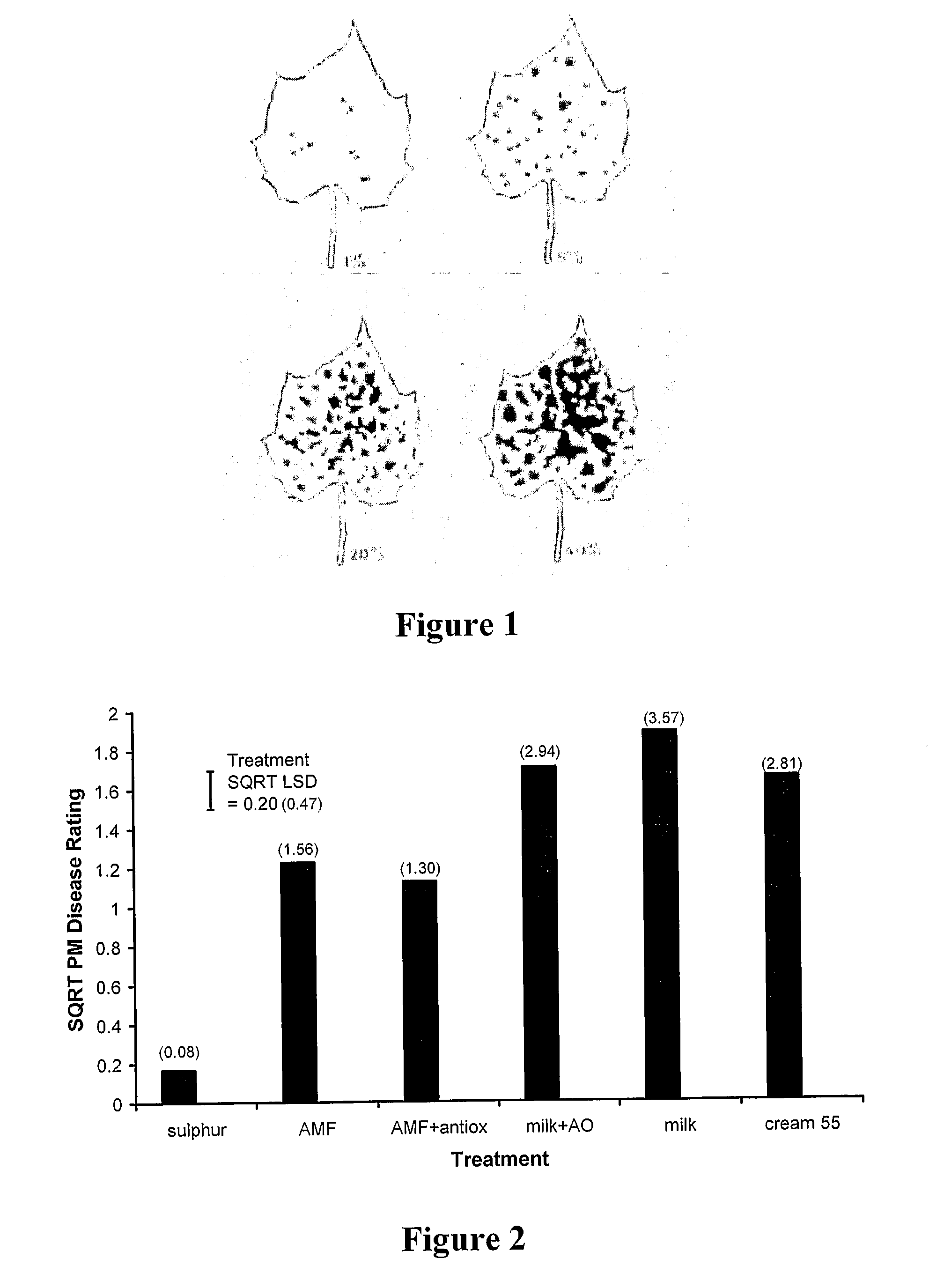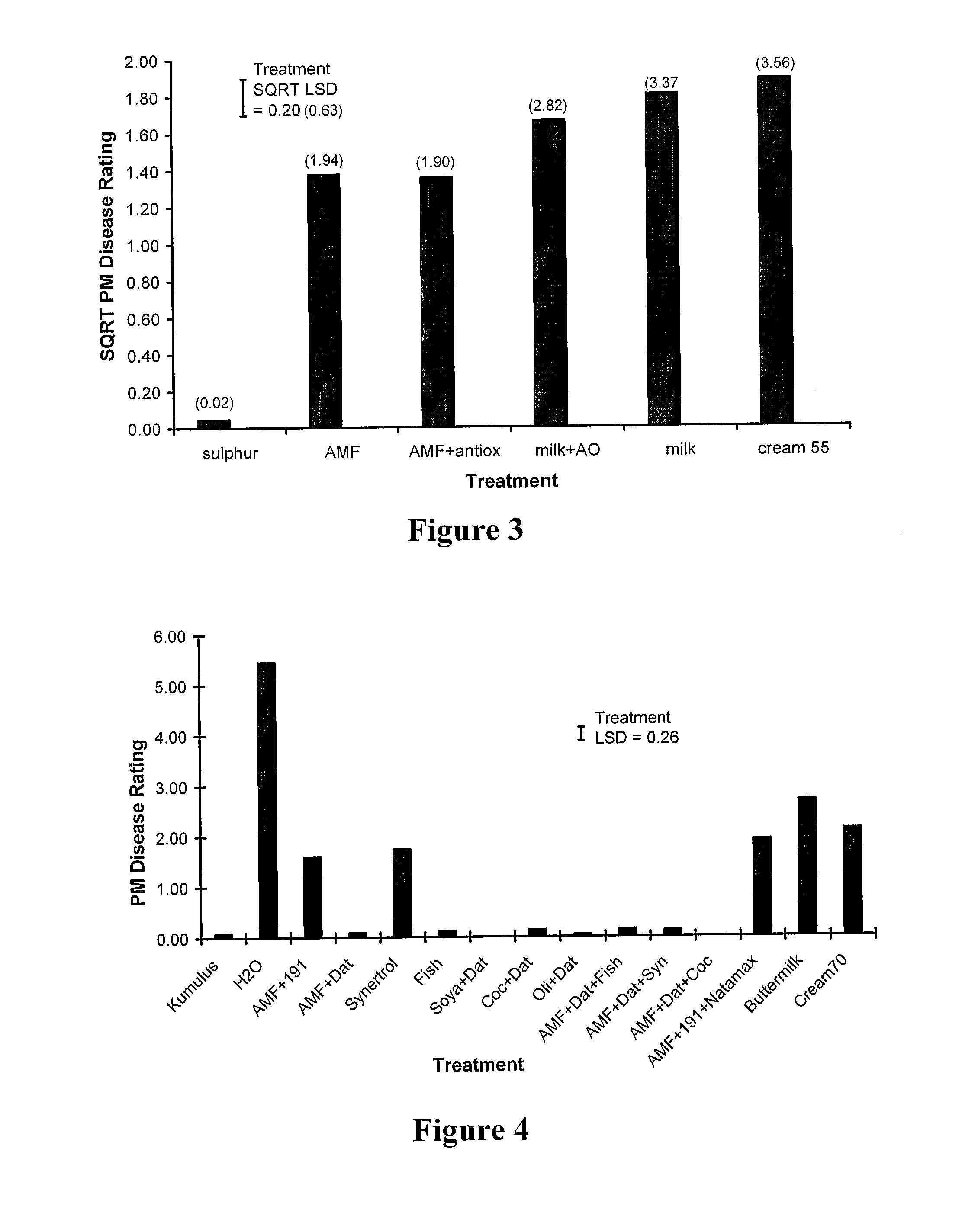Fungicidal Compositions
a technology of compositions and fungi, applied in the field of fungicidal compositions, can solve the problems of low yield, product quality, lack of efficacy organic alternatives, etc., and achieve the effect of preventing fungal infection and preventing and controlling fungal infection
- Summary
- Abstract
- Description
- Claims
- Application Information
AI Technical Summary
Benefits of technology
Problems solved by technology
Method used
Image
Examples
examples
Trial 1
Materials and Methods
[0233]Squash (Cucurbita maxima) cv ‘Delica’ and Zucchini (Cucurbita pepo) cv ‘Black Jack’ were potted in 80% bark 20% pumice media, were maintained for 8 weeks in glasshouses, with temperature ranging from 15° C. (night) to 25° C. (day), and a natural photo-period. Plants were watered twice daily for 3 min intervals using drip-feed irrigation. The media contained a complex mix of fertilisers (2 kg / m3 dolomite, 1 kg / m3 gypsum, 1 kg / m3 hydraflo, 2 kg / m3 lime, 5 kg / m3 Osmocote Plus, 1.5 kg / m3 Osmoform Pre-mix, 1 kg / m3 Super). Flowers, fruit and secondary shoots were removed throughout the course of the experiments, as were growing tips once the plants had reached an adequate size (11+true leaves). Squash plants were trained up taut strings suspended from the glasshouse roof.
[0234]Plants were randomly assigned to treatment groups (8 replicates per group) with one replicate plant from each treatment being randomly positioned on a separate table (block) in the ...
PUM
 Login to View More
Login to View More Abstract
Description
Claims
Application Information
 Login to View More
Login to View More - R&D
- Intellectual Property
- Life Sciences
- Materials
- Tech Scout
- Unparalleled Data Quality
- Higher Quality Content
- 60% Fewer Hallucinations
Browse by: Latest US Patents, China's latest patents, Technical Efficacy Thesaurus, Application Domain, Technology Topic, Popular Technical Reports.
© 2025 PatSnap. All rights reserved.Legal|Privacy policy|Modern Slavery Act Transparency Statement|Sitemap|About US| Contact US: help@patsnap.com



